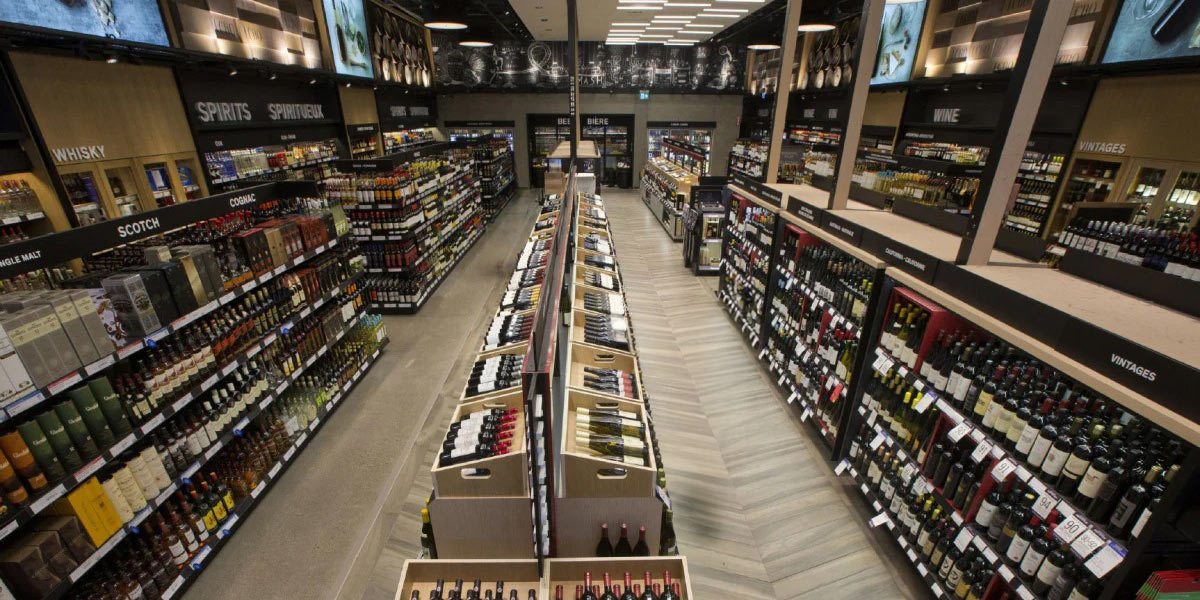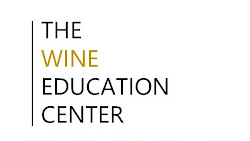Your cart is currently empty!

01 Feb How to find a great wine in a Dutch supermarket
Have you ever been to the supermarket thinking: — “I’m going to try a new wine today”, but there were so many options that you couldn’t make up your mind and you went home with your usual bottle? Well, we’ve all been there! This is why this post will give you smart tips on how to spot that amazing wine bottle standing on the supermarket shelf that best fits you!
Wine’s taste profile and its price
There are 2 factors to pay attention to, the wine’s taste profile and its price. The wine’s taste profile is how the wines do taste, is it dry, fruity, etc. Supermarkets do this to make your life easier, instead of having to worry about country of origin, vintage or grape variety, etc., you can just focus on finding a wine that fits your taste preference. Price will define the wine’s quality, in this case, the more expensive, the more intense, tasty and complex the wine will be, you’ll see that in the price range categories further down in this article.
But, first, let’s get something out of the way. Wines sold at the supermarket are well made. You won’t find a bad quality wine in a big supermarket chain. Each of these big chains have a wine department with qualified professionals that will choose wines with the best quality for the price they want to sell it for, and behind each of these wines there is a very big winery that produces millions of wine liters per year, using the latest techniques and technologies to make the best product they can under different price range categories.
Factor 1. Dutch Supermarket Wine Classification
In many Dutch supermarkets wines are classified according to their taste profile, how the wine does taste:
For whites, in general, they are classified as:
- “Vol en Droog”, full bodied and dry, with structure, wines that are more serious and more complex in flavours, that will need more time to drink as each sip will display a different character of the wine, like an oaked Chardonnay;
- “Lichtzoet”, lightly sweet, sometimes fizzy and refreshing wines where Moscato, Lambrusco, Riesling Spatlese and Asti are found;
- “Fris en Droog”, fresh and dry, easy to drink wines, a place for Sauvignon Blanc, Chardonnay, Pinot Grigio, Verdicchio, etc.
Red wines are, in general, classified as follows:
- “Fruitig”, fruity, easy to drink wines like a Pinot Noir, Beaujolais AOC and Cote de Rhone AOC
- “Soepel”, smooth, with a bit more structure than the fruity ones, such as a merlot or Cote de Rhone Village AOC
- “Stevig”, firm, complex and serious, also these wines will need more time to drink as each sip will display a different character of the wine like a Rioja Reserva DOCa, an oaked Cabernet Sauvignon or Bordeaux AOC.
For Rosé and sparkling wines, in general, there is only one category for each style, Rosé and sparkling wines, where the last is are referred as “Bubbles”.
Factor 2. Price Matters
In the case of supermarket wines, the quality of the wine is directly linked to the final price offered on the shelf. The more expensive the wine, the more the wine will give you in return, for real!
There are 2 variables that explains this, the cost of an empty bottle standing on the supermarket shelf and the wine per se, the liquid inside the bottle:
- The cost of an empty bottle
This cost includes the glass bottle, label, cork or screw cup, foil, transport, supermarket logistic etc. According to wine journalists Esmee Langereis and Karin Leeuwenhoek, an empty wine bottle placed in a Dutch supermarket costs on average 3 euro. This is a cost that will remain constant for any supermarket wine price range;
- The cost of the wine (the liquid inside the bottle)
The cost of the wine inside of a bottle will vary drastically depending on the quality of the wine. For example, if you buy a € 3,50 wine bottle, you will be paying only € 0,50 cents for the wine, the liquid, but remember that the 0,50 cents will include the winery and the supermarket profit too, so, the real cost of that wine (the liquid) may be around € 0,10 or €0,20 cents. What can you expect from it, right?
Still, even the €3.50 wines are well made wines. They are produced intentionally towards a value of €3.50, resulting in very simple wines, with few aromas and flavours. These wines are easy to drink but the flavours will disappear as soon as you’ve swallowed the wine. These wines are ok but, for just €1.50 extra, the next wine price range can provide much more enjoyment and pleasure.
Wine price ranges — What are the differences?
I divide supermarket wines in 4 price ranges:
- Less than € 5 euro
- € 5 to € 8
- € 8 to € 10
- More than € 10
As I mentioned before, the quality of the wine will be linked to the price range category of the wine. It is fascinating that for wines below €10, every euro extra makes a big difference in taste.
- Less than €5
In the first group of less than €5, we find, among others, the supermarket brands such as AH Sauvignon Blanc from France (€ 4,99). In this category, wines are very simple, with a low aroma and flavour intensity, as well as few aromas and flavours, in the case of the AH Sauvignon Blanc from France (generic Sauvignon Blanc), it mostly displays aromas of green apples and grapefruit; Also, wines are light to medium body but with a short finish (the finish is the duration of the pleasant flavours in your mouth after having swallowed the wine, the longer those flavours linger in the mouth, the better quality of the wine). In the Sauvignon Blanc example above, the flavours disappear immediately after swallowing the wine, leaving a bitter taste due to the wine’s high acidity.
- €5 to €8
In the second group of €5 to €8, wines begin to be more interesting, their aromas and flavours are more intense than the first group, more aromas and flavours are identifiable, and the finish will be longer than the first group. For example, the AH Excellent Selectie Touraine Appellation Touraine Contrólée Sauvignon Blanc (€ 7,99) displays notes of grass, asparagus, green apples, grapefruit and lime, with a longer fish of lime, grapefruit and grass, or a Jacob Creek Sauvignon Blanc (€ 7,49) will have notes of passion fruit, grass, asparagus, peach, displaying more aromas and flavours than the previous category.
- €8 to €10
In the third group of €8 to €10, wines are more serious, in the sense that they will have an even higher aroma and flavour intensity and even more aromas and flavours. These notes will linger longer in mouth and they will have a level of complexity higher than the previous levels, resulting in more balanced wines. Within this category, we find wines labeled “Reserve” or “Reserva”, therefore, more winemaking techniques will be implemented to produce the wine, like the use of wooden staves, wood chips or in some cases, the use of oak barrels to add oaky characters to the wines, like the Casillero del Diablo Reserva Especial Chardonnay (€ 9,29) that display aromas and flavours of green apples, pear, white peach, nectarine and pineapple. As well as, hazelnut, and vanilla from time spent ageing in barrels and complemented by a subtle minerality. In some cases, like the Antonin Rodet Bourgogne Chardonnay (€ 9,99), the wine undergoes an ageing period on its lees before they are filtered out, lees are a wine natural sediment that before it is removed, if it is left on purpose for some time in contact with the wine, it adds roundness and richness to the mouthfeel, reducing the wine’s acidity levels, while adding notes of biscuit and bread.
- More than €10
As for the last group of more than €10, if you are willing to spend more than 10 euro on a wine, I recommend you to go to your local wine store and buy your wine there. The personnel from the wine store will be able to recommend something that will be in line with your taste profile and that will surprise you. Wine shops generally manage smaller wine producers that don’t scale for supermarket chains. These producers can provide a higher quality in a limited production, making their wines more special and unique.
Recommendation
The next time that you go to the supermarket, check out in which taste profile and price range category your favorite wine stands. Then, start playing with these 2 variables!
- Same wine taste profile, different price ranges
If your “go to” wine stand in the “Fris en Droog” taste profile, like the Jacob Creek Sauvignon Blanc (€ 7,49) — 5 to 7 euro price range — then choose another “Fris en Droog” but from the next price range category — 7 to 10 euro price range — like Brancott Sauvignon Blanc (€ 8,99) and try to find that quality difference.
- Same price range, different wine taste profile.
If your “go to” wine is under the taste profile “Vol en Droog” like the Undurraga Chardonnay (€ 5,29), then you may choose another wine taste profile like “Fris en Droog” wine within the same price range like the Mesta Organic Verdejo (€ 5,29) and taste the difference.
- Same price range, same wine taste profile, different wine
If you “go to” wine is the “Soepel” Berberana Red Dragon Tempranillo” (€ 5,99), then you might choose another wine from the same price range and taste profile like the “Soepel” Welmoed Merlot (€ 5,99)
Before you know it, you will have tasted many different styles of wine and flavours. This is the fun part of the wine adventure!
I hope you liked the article. Please share it among your friends and if you have any questions or comments, send us an email at info@twec.nl
Many thanks and Happy Tasting!
NOTE: Always drink in moderation. Remember to drink water while enjoying your glass of wine, the “divine proportion” is, one glass of water per glass of wine
NOTE: Always drink in moderation. Remember to drink water while enjoying your glass of wine, the “divine proportion” is, one glass of water per glass of wine


